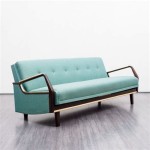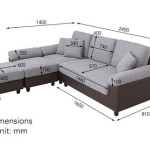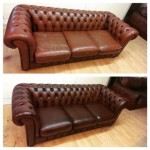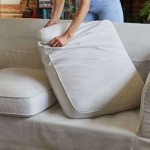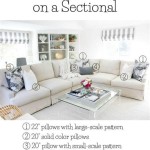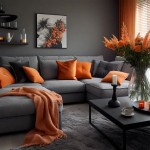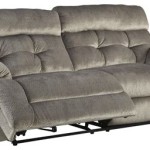The Enduring Appeal of the Mid Century Corner Sofa
The mid-century modern design movement, a style that flourished roughly from the mid-1940s to the mid-1960s, continues to exert a significant influence on contemporary interior design. Characterized by clean lines, organic shapes, and a focus on functionality, mid-century modern aesthetics offer a timeless appeal that resonates with homeowners seeking both comfort and sophistication. Among the most iconic furniture pieces born from this era is the corner sofa, a versatile and adaptable seating solution that remains highly sought after for its ability to maximize space and create a welcoming atmosphere.
The popularity of the mid-century corner sofa stems from its inherent practicality and design versatility. Corner sofas efficiently utilize unused corner spaces, providing ample seating without overwhelming a room. The modular nature of many mid-century designs further enhances their adaptability, allowing for configurations that suit various room sizes and layouts. Beyond its functional advantages, the mid-century corner sofa embodies the design principles of the era, featuring streamlined silhouettes, natural materials, and a focus on comfort. This combination of form and function makes it a desirable addition to any modern living space.
This article explores the key features, design elements, and enduring appeal of the mid-century corner sofa. It will examine its historical context, discuss its defining characteristics, and offer guidance on incorporating this iconic piece into contemporary interiors. By understanding the nuances of mid-century design and the specific attributes of corner sofas from this era, individuals can make informed decisions when selecting and incorporating these pieces into their homes.
Key Features and Design Elements
The mid-century corner sofa is defined by several key features that distinguish it from other sofa styles. These elements contribute to its distinctive aesthetic and functional appeal. Understanding these features is crucial for identifying and appreciating authentic mid-century designs.
One of the most prominent characteristics is the emphasis on clean lines and geometric shapes. Mid-century designers favored simple, uncluttered forms that eschewed ornate details. This minimalist approach is evident in the straight lines, sharp angles, and overall streamlined silhouette of the corner sofa. The absence of excessive embellishment allows the sofa to blend seamlessly into various interior styles, from minimalist to eclectic.
Another defining element is the use of natural materials. Wood, particularly teak, walnut, and oak, plays a significant role in the construction of mid-century furniture. These hardwoods are often used for the sofa's frame, legs, and accent details. The natural grain and warm tones of these materials contribute to the sofa's organic aesthetic and create a sense of connection to nature. Upholstery typically consists of durable fabrics like wool, linen, or tweed, often in earthy tones or geometric patterns.
The leg design is also a distinctive feature of mid-century corner sofas. Tapered legs, often angled outward, are a common characteristic. These legs create a sense of lightness and airiness, preventing the sofa from appearing bulky or heavy. The legs are typically made of wood or metal, and their design complements the overall aesthetic of the sofa.
Button-tufting is another design element often found on mid-century corner sofas. While not universally present, button-tufting adds a touch of visual interest and texture to the upholstery. The buttons are typically evenly spaced and create a subtle geometric pattern on the sofa's surface. This detail can enhance the sofa's overall elegance and sophistication.
Furthermore, the focus on comfort is paramount. While aesthetics are important, mid-century designers prioritized functionality and comfort. Corner sofas from this era are typically designed with ample cushioning and ergonomic considerations to ensure a comfortable seating experience. The use of high-quality materials and construction techniques contributes to the sofa's longevity and enduring comfort.
Materials and Construction
The materials and construction techniques used in mid-century corner sofas are crucial to their durability and aesthetic appeal. A thorough understanding of these aspects allows for a more informed appreciation of the craftsmanship and longevity of these pieces.
As previously mentioned, wood plays a significant role in the structural integrity of the sofa. The frame, typically constructed from hardwood such as teak, walnut, or oak, provides a solid foundation for the sofa. The choice of hardwood ensures that the sofa is robust and can withstand years of use. The wood is often kiln-dried to prevent warping and cracking, further enhancing its durability.
The upholstery fabrics used in mid-century corner sofas are chosen for their durability, texture, and aesthetic appeal. Wool, linen, and tweed are common choices due to their resilience and natural textures. These fabrics are often woven in solid colors or geometric patterns that are characteristic of the mid-century era. The fabrics are typically treated to resist stains and wear, ensuring that the sofa maintains its appearance over time.
The cushioning materials used in mid-century sofas are also carefully selected for their comfort and longevity. High-density foam is often used for the seat cushions, providing firm support and preventing sagging. Down or feather filling may be used in the back cushions for added comfort and softness. The cushions are typically encased in muslin or other protective fabric to prevent wear and tear.
The construction techniques used in mid-century furniture are often characterized by attention to detail and a commitment to quality. Joints are typically reinforced with screws, dowels, or mortise-and-tenon joinery to ensure structural stability. The upholstery is carefully applied and secured with staples or tacks to create a smooth and durable finish. The legs are often attached to the frame with screws or bolts, ensuring that they are securely in place.
The spring system used in the sofa also contributes to its comfort and durability. Sinuous springs, also known as no-sag springs, are a common choice for mid-century sofas. These springs provide even support across the seat and prevent sagging. The springs are typically attached to the frame with clips or staples and are designed to withstand years of use.
Incorporating Mid Century Corner Sofas into Contemporary Interiors
While mid-century corner sofas are inherently stylish, effectively incorporating them into contemporary interiors requires careful consideration of the surrounding space and design elements. Achieving a harmonious balance between the sofa's vintage aesthetic and the overall style of the room is essential for creating a cohesive and visually appealing environment.
One approach is to embrace the minimalist principles of mid-century design. This involves creating a clean and uncluttered space with a focus on functionality. Pairing the corner sofa with simple, geometric-shaped coffee tables, side tables, and lamps can enhance the overall aesthetic. Neutral color palettes with pops of color can also complement the sofa's natural tones and clean lines.
Another strategy is to create a contrast between the mid-century sofa and more contemporary elements. This can involve incorporating modern artwork, lighting fixtures, or accessories into the space. Juxtaposing the sofa's vintage aesthetic with sleek, modern pieces can create a dynamic and visually interesting contrast. However, it is important to maintain a sense of balance and avoid overwhelming the space with conflicting styles.
The choice of color palette is also crucial for integrating a mid-century corner sofa into a contemporary interior. Earthy tones, such as browns, greens, and oranges, are characteristic of the mid-century era and can create a warm and inviting atmosphere. These colors can be incorporated into the walls, rugs, and accessories to complement the sofa's natural materials and clean lines. Alternatively, bold and vibrant colors can be used to create a more contemporary and eclectic look.
The placement of the sofa within the room is also an important consideration. Corner sofas are ideally suited for maximizing space and creating a defined seating area. Placing the sofa in a corner can create a cozy and intimate atmosphere. Alternatively, the sofa can be used to divide a larger room into distinct zones. The placement of other furniture pieces, such as coffee tables, side tables, and lamps, should complement the sofa's position and create a functional and visually appealing layout.
Finally, accessories can play a significant role in enhancing the overall aesthetic of the space. Throw pillows, blankets, and rugs can be used to add texture, color, and visual interest. Geometric patterns, natural materials, and vintage-inspired designs can complement the sofa's mid-century aesthetic. Carefully selected accessories can help to create a cohesive and personalized space that reflects the homeowner's individual style and preferences.

Pensive L Shape Sofa Bespoke Fabric 266 Cm Originals Furniture
Mid Century Sofas What S Your Style Thing Dfs

Image Result For Leather Mid Century Corner Sofa Decoración De Unas Sofas En Esquina Interiores Casa

Mid Century Modern Style Sofa Sectional Couches Living Room Perfect

Living Room Ideas 10 Luxurious Mid Century Modern Sofas For Your Home

German 1950 S Corner Sofa Daybed By Wilhelm Knoll 20th Century Scandinavia

Mid Century American Sectional Corner Sofa In Finely Striped Upholster Moz

Hudson Deep Seat Mid Century Corner Sofa Feather And Fibre Cushions Daia Home

Sidney 3 Seater Leather Sofa Vintage Tan Premium

Mid Century Italian Corner Sofa With Rosewood Book Shelves Record Player 1960s For At Pamono

